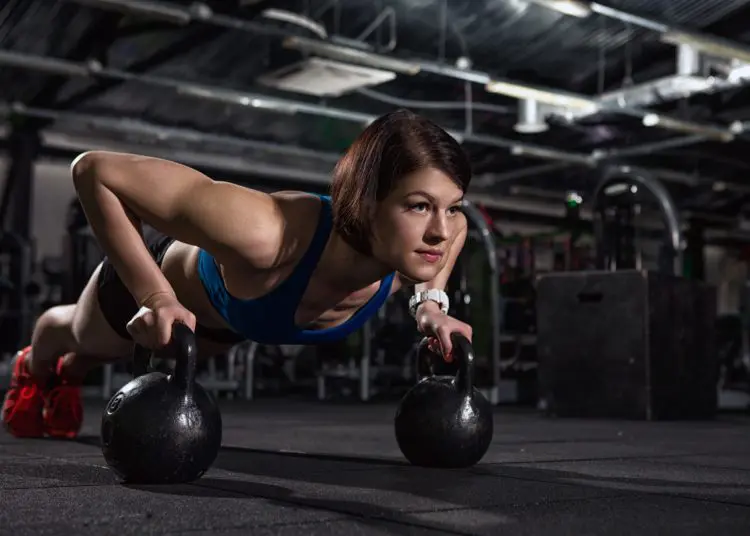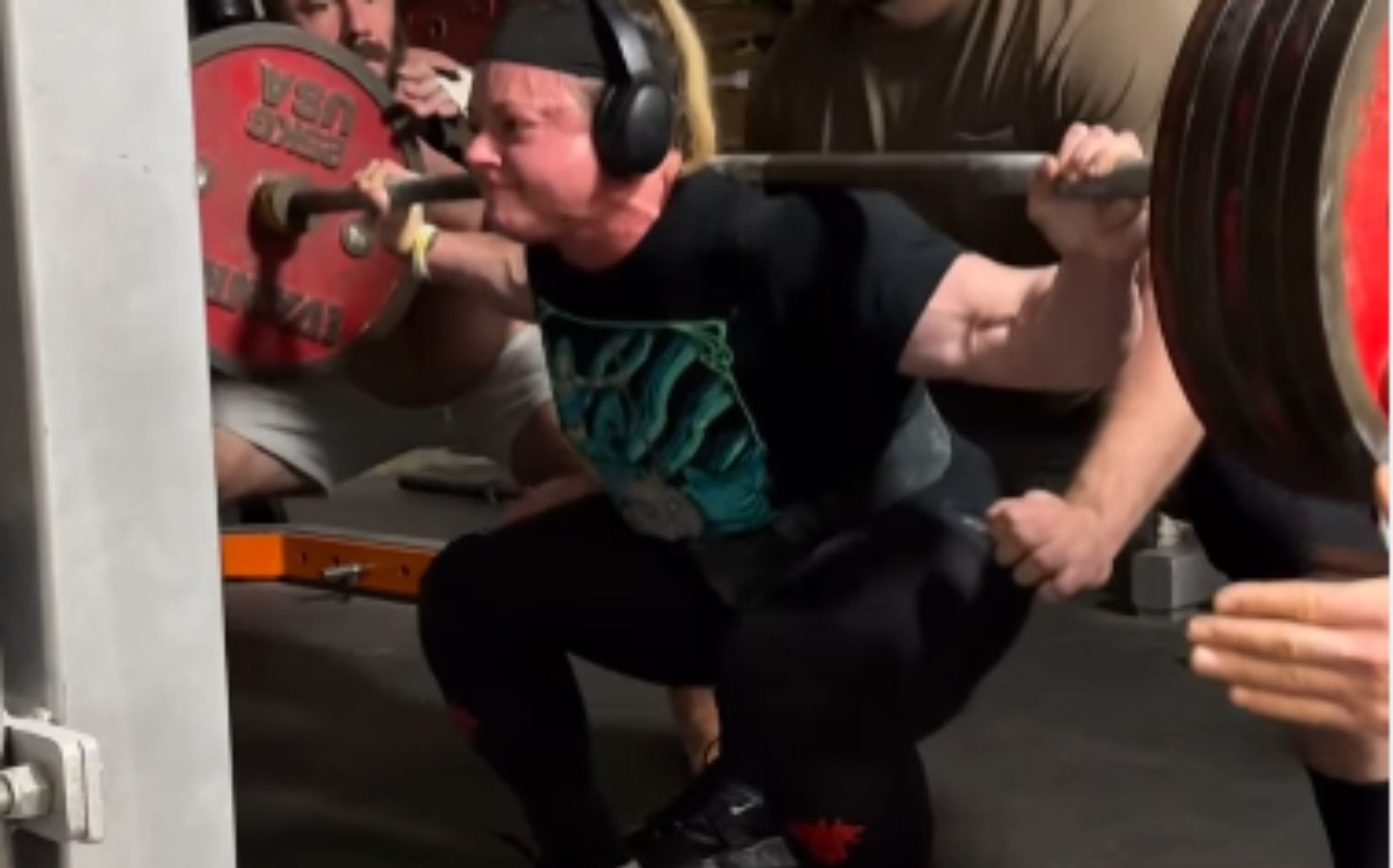Have you ever noticed that your weight fluctuates a few pounds depending on the time of the month?
I tend to find that I’m usually a couple pounds lighter than normal for a few days just after my period, and slightly heavier around day 13 to 15.
These weight fluctuations are normal, and can be caused by natural hormonal fluctuation, temporary water retention, or sometimes giving in to those sugar cravings that hit you harder than normal at different times of the female cycle.
Hormonal fluctuations do way more than just cause you to gain or lose a few unexplained pounds: They affect every aspect of your body, including your mood, your sleep, and especially your training. So if you’re into optimizing your performance at the gym, it’s worth learning about what’s happening in your body, and definitely worth listening to what your body is telling you it needs at different times of the month.
Day 1 to Day 5-7
The first five to seven days of your cycle—menstruation—is when progesterone and estrogen levels are at their lowest. This means you might feel a little low on energy, and, in some cases, those nasty cramps hit you hard and take you down.
Level Up Your Fitness: Join our 💪 strong community in Fitness Volt Newsletter. Get daily inspiration, expert-backed workouts, nutrition tips, the latest in strength sports, and the support you need to reach your goals. Subscribe for free!
Training tip: Although cramps can make it hard to want to do anything other than throwback Advil or magnesium and curl in a ball under the covers, it’s generally recommended to remain active. This doesn’t mean pushing it to the max in the gym or trying to PR a CrossFit girl workout. Even going for a walk can help reduce cramps and improve your energy levels, as one 2015 study suggests.
Best advice: Keep intensity low if you’re feeling down, but keep moving.
For most women, menstrual cramps last for a day or two, and then ease off in the final few days of menstruation. During these days—the follicular phase of your cycle, which starts on Day 1 and goes until the end of ovulation—is a time when your pain tolerance and insulin sensitivity are at their highest, meaning it’s a good time to build strength.
Bottom line: As soon as your cramps are gone, push hard in the gym until around day 14 (depending on the person).
Nutrition tip: Losing too much blood can lead to anemia (i.e. low iron). Even mild cases of anemia can leave you feeling fatigued. In the days leading up to your period, and while you’re on your period, make a conscious effort to eat foods that are high in iron, such as red meat and dark leafy greens like spinach, or consider taking an iron supplement.
Female cycle aside, iron deficiency is common in women. Depending on the source, it is believed that 10 to 20 percent of women in the United States are anemic, and teenagers, athletes and vegans are more at risk. This 2019 study found that 35 percent of female athletes have low iron.
Plant-based take note: It is generally recommended that women get 18 mg of iron per day. However, these guidelines are based on a carnivore diet, meaning they’re based on intaking animal iron (also called heme iron). Plant-based iron (non-heme), on the other hand, isn’t absorbed by the body as effectively. What this means is vegans and vegetarians need to eat way more iron to have the same effect. You need 1.8 times the normal amount for the same results, or 32 mg per day. This is pretty hard to get unless you take an iron supplement. And if you’re a heavy bleeder, you most definitely should look into this.
Bonus tips: Vitamin C also helps your body absorb iron more effectively, so consider taking a Vitamin C supplement, as well. Finally, Vitamin B12 helps produce red blood cells, which is how iron is transported, so make sure you’re getting enough Vitamin B12 from foods like eggs, milk, cheese, fish and chicken.
Ovulation (Day 11 to 14)
Depending on the individual, ovulation can happen anywhere from Day 11 to Day 14. This is when the mature egg gets released, meaning fertility is at its highest. At this time, hormone levels are high, and energy levels, too.
Training tip: As mentioned, this is the time when the gains are made, as your body is in peak physical condition. So train hard! Go for that PR on the CrossFit Total.
On the other hand, there’s evidence, such as this article that this is a time when you’re more susceptible to injury, as estrogen levels are high, which can affect neuromuscular control. This means your joints are more mobile and less stable, so make sure—especially if you’re a bendy one—that you add stability exercises to your warm up before you start loading up your back squat.
I also recommend warming up your core to make sure you’re ready to brace harder than normal, especially during a heavy lifting session. Three exercises I like to get your core firing to help keep you stable when you lift include:
- Banded planks
- Plank marches
- Banded deadbugs
Banded planks
Plank marches
Banded deadbugs
Nutrition tip: Your metabolism starts ramping during this time, so you might feel extra hungry; however, your metabolism won’t reach its peak until closer to the end of luteal phase (i.e. often around Day 22-25), so it’s not necessarily the time to eat more than normal.
Bonus tip: Your energy levels are high, so take advantage of this time to be productive, as they’re going to start to decline again in the upcoming days. For example, take the time to prepare healthy meals, so you have them on hand when your energy levels drop and your sugar cravings sore in the upcoming days.
Day 25 to 28-30
This is the end of the luteal phase and hormone levels decline once again. While you’re not yet on your period, your body is preparing for menstruation, so some of us experience cramps and bloating this time. It’s also common to feel more stress and anxiety with uncharacteristic mood swings or fatigue. That’s normal.
Get this though: You might not feel good, but your body’s metabolism is high during these days. With this, though, comes those food cravings, especially for sugary and fatty foods. It’s not just in your mind. This 2016 study suggests hormone levels during this these days—namely leptin estrogen—are optimal for food cravings.
Training tip: There’s actually evidence your body temperature is higher than normal at the end of your cycle, right before menstruation, which can make you feel like you’re working harder, especially during metabolic conditioning workouts.
Best advice: Listen to your body and keep your routine going. It’s not necessarily the time to be training your hardest, but consistency is key, especially for the mind.
Nutrition tip: Though you might feel carb cravings, pay attention to protein during this time. It will help you feel full and it also increases serotonin production, which helps keep your mood high. Serotonin also helps with appetite and digestion, as well as with sleep.
Bottom line
If you have paid little to no attention to what’s happening in your body—be it your emotions, your sleep, and your stress levels during different times of your cycle—it’s time you start. I recommend journaling about it for three months to see if you start noticing trends.
For example, it might help you realize that you always feel bloated in the three days before menstruation. If this is the case, it’s worth limiting salty foods during these days, as salty foods make you retain water. They also make you thirsty, so then you drink more and feel more bloated. Or maybe you’ll realize you’re always more likely to fight with your partner just before your period. It might be worth waiting a few days to bring up a tough subject when you’re feeling more stable.
The take home: While there are certainly general trends related to different times of the female cycle, it’s also important to remember each woman is different. So take the time to get to know your unique body and listen to what it’s telling you.
This newfound awareness will allow you to make adjustments to improve your CrossFit training, nutrition, sleep, and lifestyle habits, to optimize your physical and mental well-being.










